Part 6 – Top 10 Things to do at Bundaberg
“To invent an airplane is nothing. The build one is something. But to fly is everything.” – Otto Lilienthal

Herbert John Louis Hinkler
Well, Herbert John Louis Hinkler would qualify on all three respects – invention, building and flying. His is a story that impressed me a great deal, far before I read his history. As I once mentioned in my earlier article on Bundaberg beaches, Hinkler’s name was associated with Mon Repos Beach, QLD. You may want to know the connection between the beach and Hinkler, which is a fair question. Mon Repos was the beach on which Hinkler tested his flight invention. His experiments were staunchly encouraged by his mother who would help haul his glider onto the family carriage and drive it several miles to the beach which was his testing ground. Along with a few others, she would stand in support as her son assembled his invention, unfolded its wings (which were kept folded while in transit) and set it atop a sand dune. Incidentally, the sand dunes are also areas where turtles come to hatch as you would have read from the Mon Repos beach article.
This was reason enough to drive me towards Hinkler Hall of Aviation which incidentally has earned a “TripAdvisor Certificate of Excellence” based on a 4.5* rating by its guests.
As we entered the museum, we noticed a cut out of a young man who was none other than Bert Hinkler. The shape was a graphical representation of what he looked like in real life. He was of short stature, so short that as we – my sister and I – stood by this silhouette, we measured up to almost his height if not an inch taller.

By a cut-out of Hinkler
Having read his biography, I came to learn that Bert Hinkler’s parents had long made Bundaberg their home. His family comprised his father John, mother Frances, brother Jack and sisters May and Queenie who lived in a cottage in Gavin Street and a small distance away from the north end of the Burnett River. In fact, there’s a bust of him at the south end of the Burnett traffic bridge. His was a close-knit family with Bert being especially close to his mother and his sister. In latter years, when he flew away from home, he is known to have written affectionate letters to them which displayed a fond family affinity.

Bert, with wife and mother
The oldest of the children was Bert who was born on 8th December 1892 and who later went to North Bundaberg State School. He was known to be academically bright at school but was teased for his thriftiness. From reading more about him, I came to learn that he used his money sparingly in later years so as to use his savings to buy parts for his glider. So much for his thrifty inclination, I sure am impressed with his use of money for a greater purpose over what his fellow school mates would have used for some candy or fun sprees.
We came to an interesting spot in the museum, where Bert Hinkler’s early glider is stationed. We took turns to enter the contraption for a picture. It took time to enter the aircraft as we were way too big to fit into the seat that once belonged to the small built Hinkler. Getting into the plane was easier than getting out of it without carefully sliding sideways to avoid scraping against the sharp tinny edges.
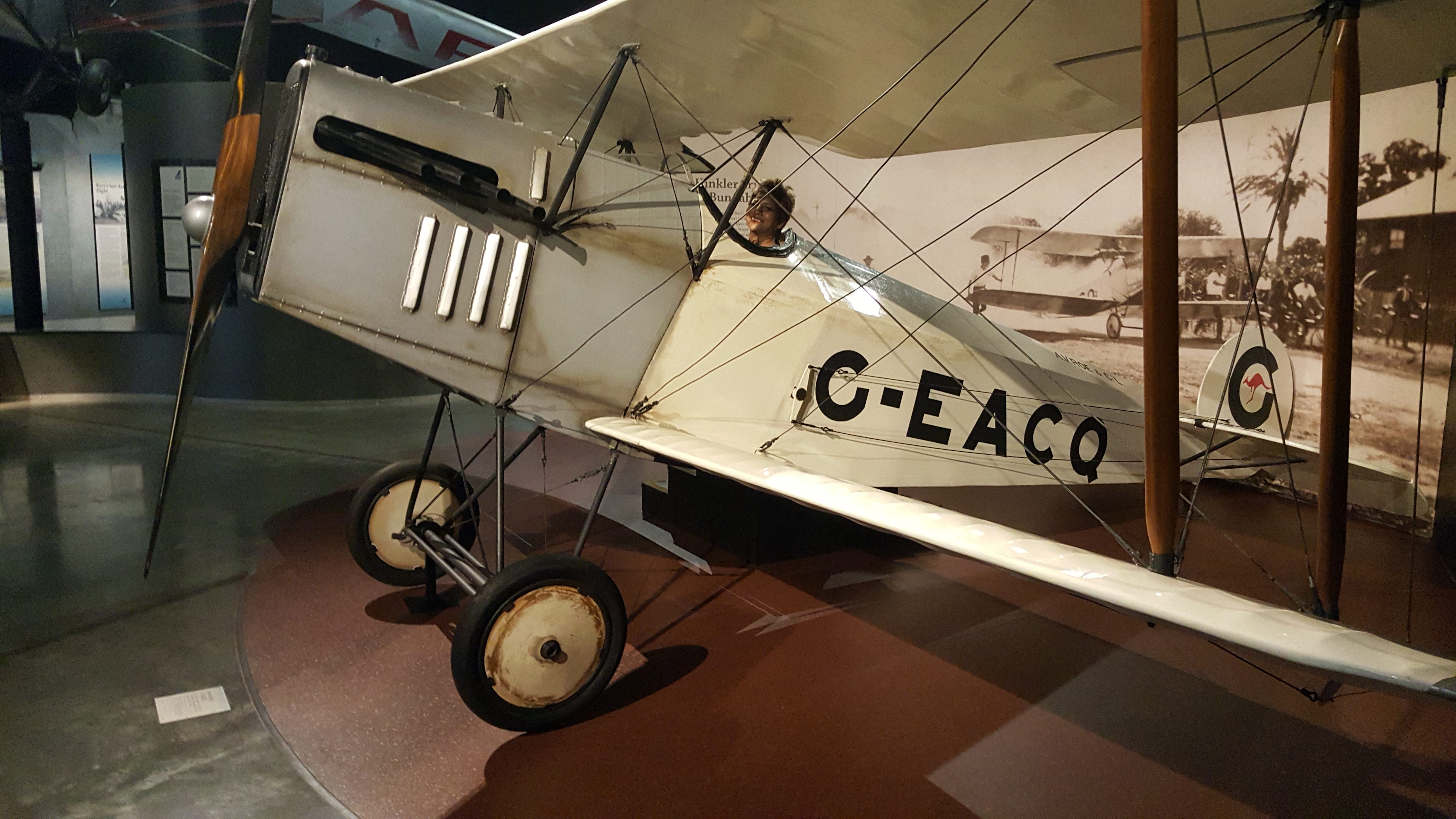
Set to fly!
What was it that fostered Bert’s interest in aircraft invention and flying? He was like a dreamer but one who dreamed a dream with a difference. As a child, he used to be captivated by the ibises wading in the lagoons in the proximity of his school. He would stare at them for hours at a stretch and study their movements. While the birds were unwieldy and waddled in a lumbersome manner their flight was elegant. Bert appeared unusually fixated with their movements – on the ground as well as in the air. He watched how they took off and landed and then tried to liken them to flight takeoffs and landings. He pored through many an article on planes and analogized them to the ibises.
Soon his interest gave way to experiments which he found a place for in his shed. He created his own steam chamber, manually. His early gliders were built in 1911 through much trial and experiment. He examined the balance between the spread of the wings to the weight of the structure.
Then he went on to work on his glider designs, which he described as “a pair of wings with arm sockets” which he would slip into as “a coat”. It was termed the “aviette“. However, this experiment failed as common to most inventions. Not one to be deterred by failure, he went full throttle into building a plane with a single wing. That he was a terrific mathematician helped his experiments which naturally involved complicated calculations, air pressures and what else. He sought the support of family and friends to try out this new plane.
Finally, his creation earned success in the year 1912. He was aboard the creation and his “crew” were busy tugging the ropes when his glider suddenly soared upwards with a gush of wind. Attempting to fly from the beach was a good idea as the south-easterly sea breeze propelled the glider into his first success.
That he flew his first solo flight from England to Australia in Feb 1928 is well known and for which he earned the Britannia trophy. He came home to Bundaberg at the end of this sojourn and being the family man that he is, it was a great homecoming indeed.
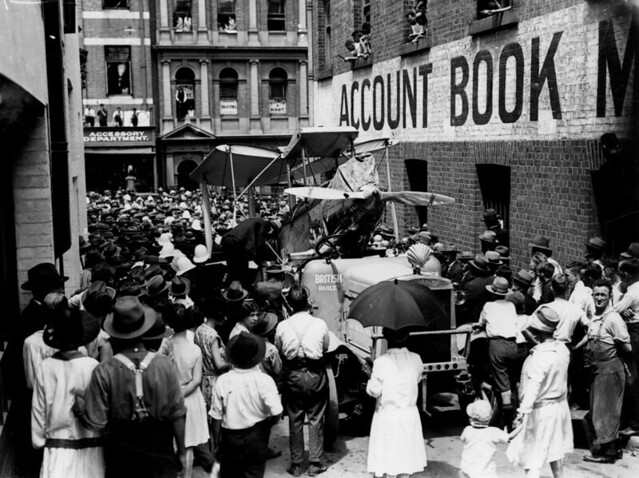
People crowding in Brisbane to catch sight of the Avro Avian in 1928
Bert won several more awards and service medals in aviation events and test pilot ventures. What surpassed all of his undertakings, however, was the flight he made on a de Havilland Puss Moth from Canada to Jamaica, over Venezula and Brazil to Africa and thereon to England. This flight which was flown through terribly stormy conditions won him the Segrave Trophy.
As with all intense touring, any tourist want to catch his breath and what better a way to unwind than on simulated gliders. “Glide Like Bert” is what it’s called; which allows you to lie laterally on a flat board to make you seem as though you are gliding in a plane. It has controls which help manoeuvre the simulated flight from a screen in front of you that takes you over the Mon Repos beach that once was Bert’s haunt for flying experiments. That I wasn’t half as good as Bert was was soon manifest in my crashing into the sea on my first simulated experiment.

Glide like Bert
And when you’re done with simulated flying and reading up descriptions of Hinkler’s life story there’s a spot where you could pick up a dial phone and listen to an audio account of Hinkler’s journey in aviation. It re-enacts the scenes from Mon Repos beach in 1912 prior to his first flight.
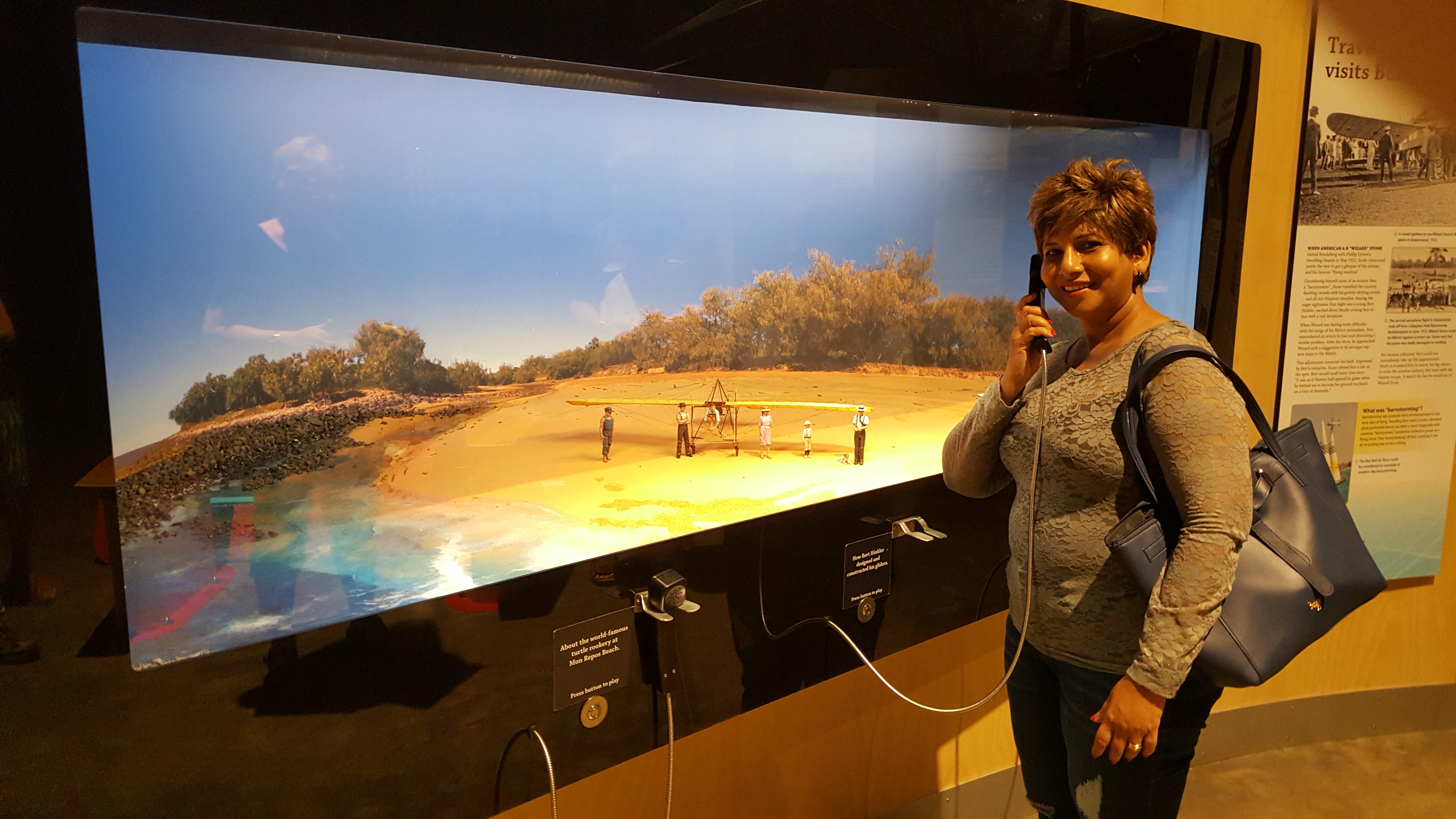
Listening to an audio story on a Dial Telephone
There are light-hearted photo moments to capture from a Box Brownie in front of Hinkler’s Avro Baby. If you don’t know what it means, the Avro Baby was a single-engine aircraft which Bert flew solo from Britain to Australia in 1928. You could choose a variety of props from an epoch of the 1920s, don it on your head if it’s a wig, get yourself clicked by the “Box” and then receive the photo on your email.
The Flight Simulator experience is like any video game which enables you to test your flying skills, taking off from three different airports namely Bundaberg, Darwin and Southampton.
On my way out I noticed an old radio sitting at the far end, which when pressed plays a tune. It’s called “Hustling Hinkler” on which you may keep step with footprints in serial order.
You can’t miss the “Globe Theatre” which is in the shape of a globe inside which you may watch a movie on the life of Bert Hinkler. A countdown timer outside the globe lets you know the time of the next movie which lasts fifteen minutes.
What about Bert’s personal life, after his immediate family of course? He was in a de facto relationship with spouse Hannah Javis (Nance) from his early aviation days in the 1920s, for nearly 15 years. He, however, got legally married in 1933 to Katherine Rome with who he lived in a house called Mon Repos whose name would have been inspired by his experimental ventures on the Mon Repos beach. That the house was based in England and was shipped to Bundaberg in 1983 made for gripping listening. I was fortunate to visit this house of his which is maintained as a museum in Bundaberg.

Hinkler “Mon Repos” Home in Bundaberg

Bedroom in Hinkler “Mon Repos” Home
As all good things come to an end Hinkler’s life came to an end a year after his marriage, in yet another flight from England to Australia. However, much later it was learnt that his plane had crashed in the Tuscan mountains of Italy in 1934. This occurred during dictator Mussolini’s reign, and under his orders, a full state funeral with military honours was accorded.
I was personally moved by the fact that an intelligent and brave pilot was lost at a young age of 40; I always am of the opinion that the world is sorrier for the loss of any great contributor and source of inspiration. That he was worked with error-free precision makes it incredible that he should have crashed far sooner than he was expected too. He was a pioneer in the field of aviation and that his works and history is displayed at the Hinkler Hall of Aviation, an aeronautics museum is the least that his city could honour his memory with.

Sydney to Bundaberg in Baby Avro
Check out PART 5 about Mystery Craters or Moon Craters. It is unique and unknown and may not fall among the Top Things To Do In Bundaberg but worthy of a short visit.
Also check out PART 7 about Fairymead House, which I’d recommend as one of the Top Things to do in Bundaberg.
.


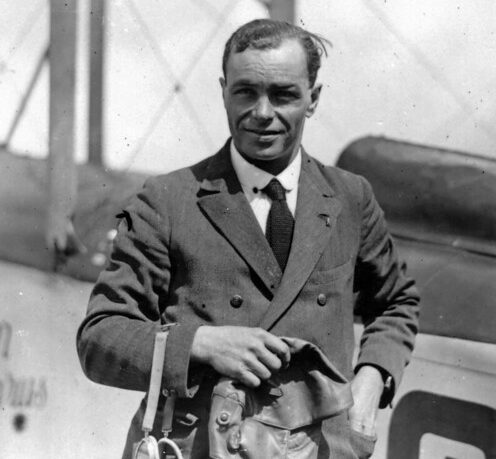
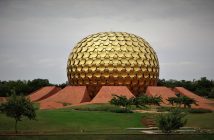
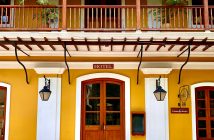
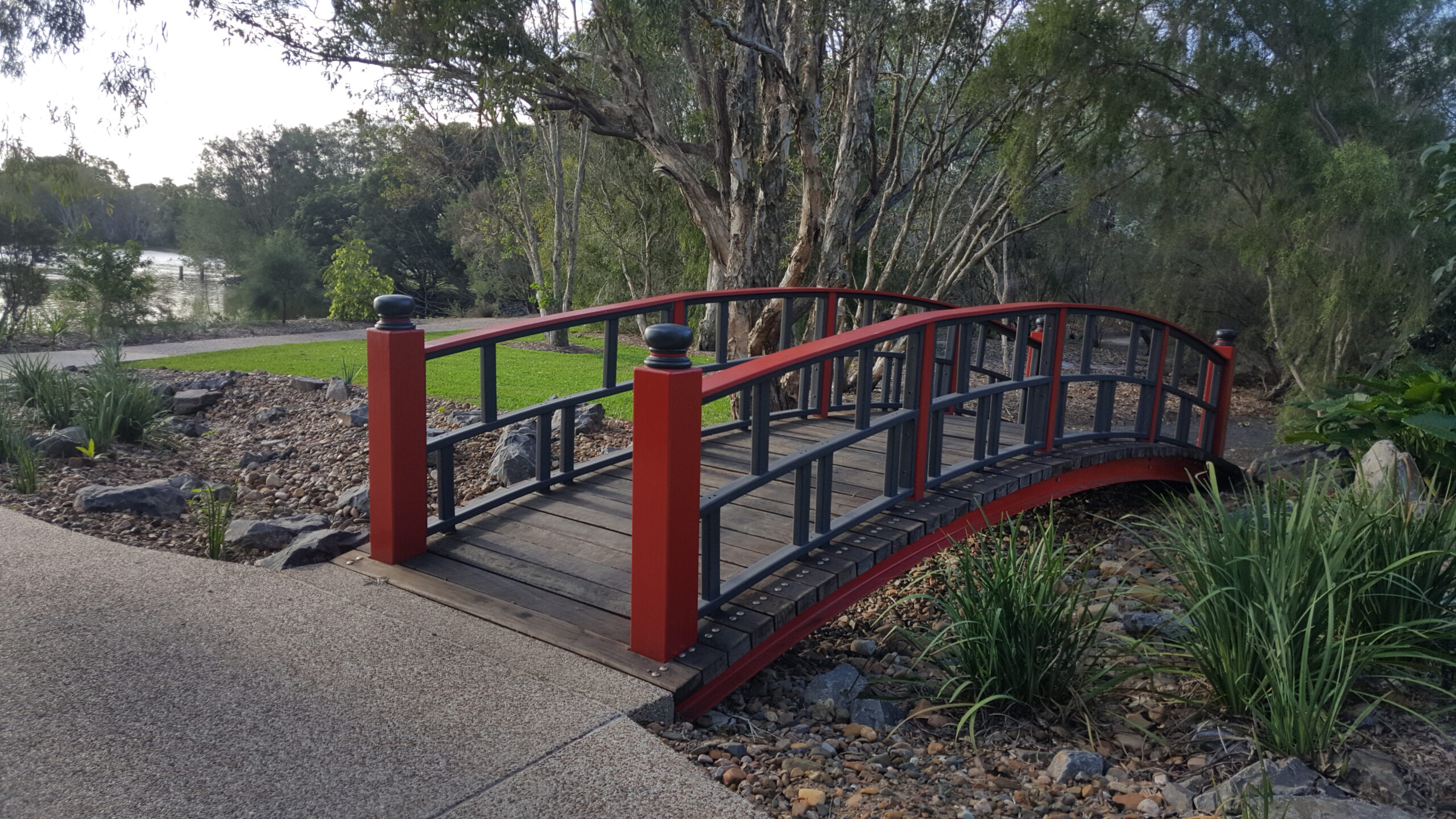
2 Comments
A really concise and precise biography of Hinkler in words, pictures and videos.
Priya
Yesterday’s flight, when it was generally understood that the attempt had been indefinitely postponed, came as a surprise; the two airmen set out from Lancaster without declaring their intentions, and were fortunate in the circumstances not only in making their landing on the mountain, but in finding an unexpected witness to their achievement waiting to receive them. I hereby certify that an aeroplane – GEBPH, pilots Bert Hinkler and John Leeming – landed on the summit of Helvellyn on December 22, 1926.